Oatcakes are a traditional cracker made out of oats that can be found in shops and restaurants all across Scotland, but not everyone has an easy Scottish oatcakes recipe for making them at home. Well, look no further…
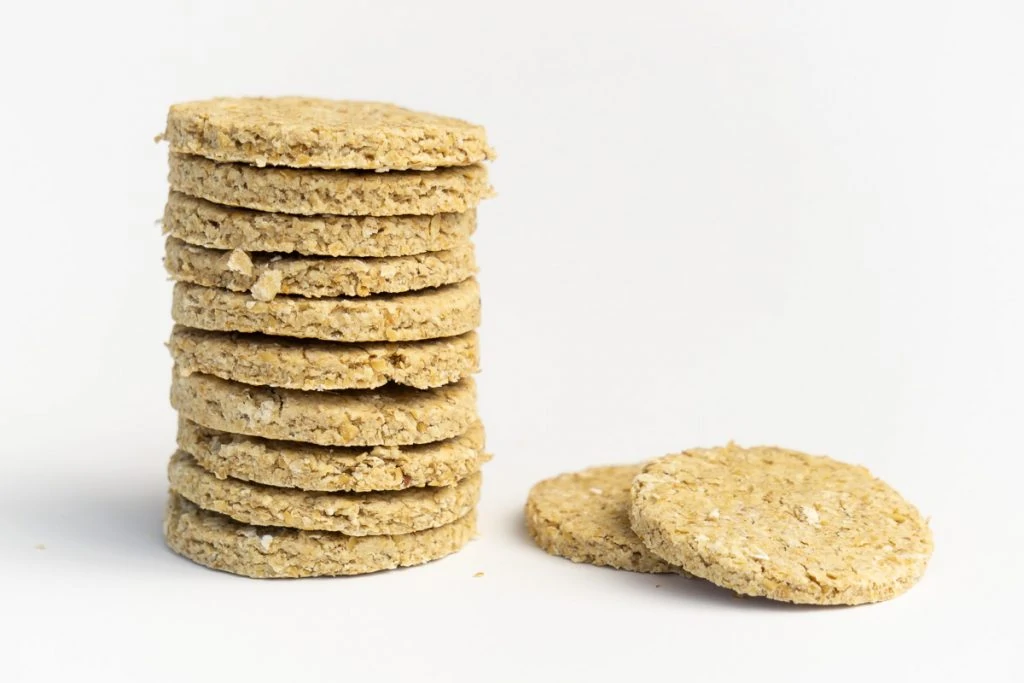
Their versatility means you’re as likely to be served them with soup as with cheese or pate when you’re eating out, and there is a multitude of different varieties across supermarket shelves, including some with different flavour combinations.
Oatcakes are perfect as an addition to a meal or an in-between snack. They’re a bit like the bread of Scotland, and have been made here for hundreds of years.
While they’re widely available in Scotland, that’s not always the case around the world, so we decided to make a simple oatcake recipe for anyone who can’t easily get their hands on a pack, or for anyone who just fancies making up their own batch at home.
And in any case, when you’re making homemade oatcakes you can decide exactly what you want in them too! We’ll share a little more about some possible flavour combinations a bit further on.
What is an Oatcake?
In Scotland, an oatcake can sometimes refer to something more bread-like, like a bannock. Which in turn is sort of like a flatter scone made with oats. Confused yet?
But in this Scottish oatcakes recipe, we’re referring to the hard oatcakes that are more like a cracker and have a snap.
They’ve been recorded as being made in Scotland since Roman times, but it’s widely thought that they were made there long before that.
There is tell of nuns in Scotland in the 14th Century making small pancakes the size of communion wafers; this is one of the earliest descriptions of the making of oatcakes.
Obviously, things have changed a little since then, and you’ll sometimes find oatcakes made with flour as well, rather than just plain ground oats. We’ve decided to stick to the more traditional and just use oats!
You can see what a bannock looks like in our recipe here.
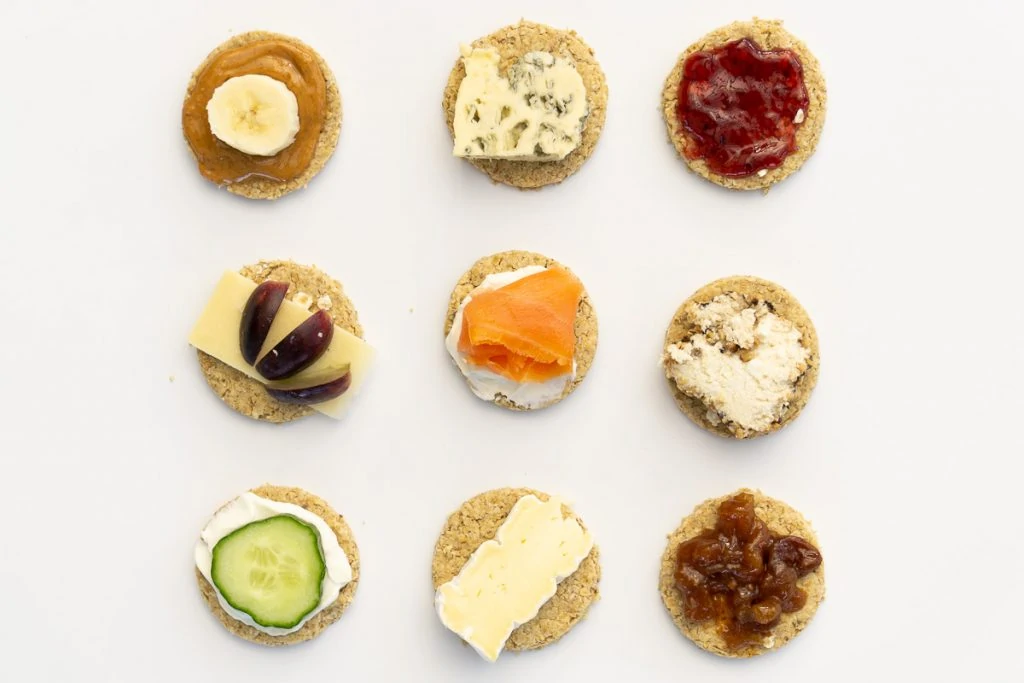
Things you’ll need to make Oatcakes
Oatcakes are relatively simple to make with just a few kitchen items.
- Rolling pin
- Baking tray
- Baking paper or reusable baking mats
- Cookie cutter, glass, or scone cutter (we use one like this)
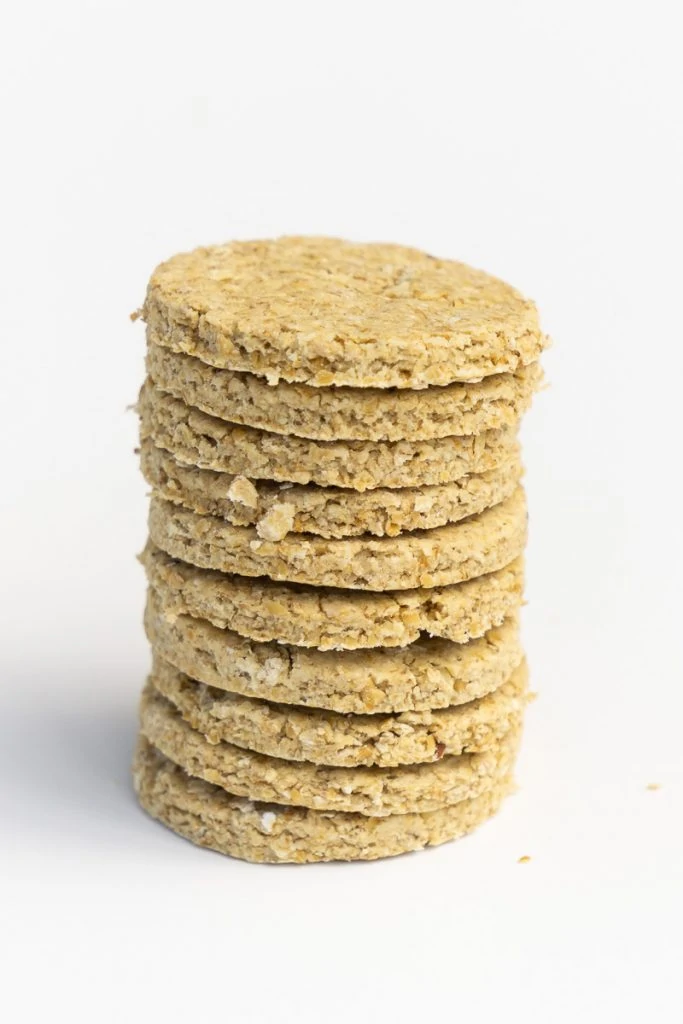
Ingredients for Oatcakes
- 100g rolled/porridge oats
- 100g oatmeal
- 25g butter
- 1tsp salt
- A few tablespoons of hot water
What oats you’ll need
Different types of oats go by different names, depending on the country you’re in. When you’re making oatcakes, the type of oats you have will have a big impact on how they turn out.
You want your Scottish oatcakes to have a little texture but not just fall apart because the oats are too big, so using the right sort is crucial to the recipe.
On the other hand, you don’t want the oats to turn into porridge and have no texture at all! If you do want porridge, try our recipe! 😉
Let’s start with the UK…
Rolled oats are usually the bigger, rounder variety that are flattened with a roller. Porridge oats are a little more broken down as they are crushed. Oatmeal is like a blended version that is smaller again.
For our recipe, we use a mixture of porridge oats and oatmeal. In this sense, the oatmeal is like ground-up porridge, as we often see oatmeal referring to cereal elsewhere!
If you only have access to rolled oats, then you can use these as they also break down well in water, or you can use a blender to make them slightly smaller. Not too much or they’ll be like oatmeal!
In the US things are trickier…
You can see the photos below, which is likely to be the most helpful because there are not even uniform names in some cases. They could possibly be called quick-cook rolled oats, Scottish oats, oat flakes, etc. You could use rolled oats instead if that’s all you can get.
The oatmeal is possibly ground oats or fine ground oats.
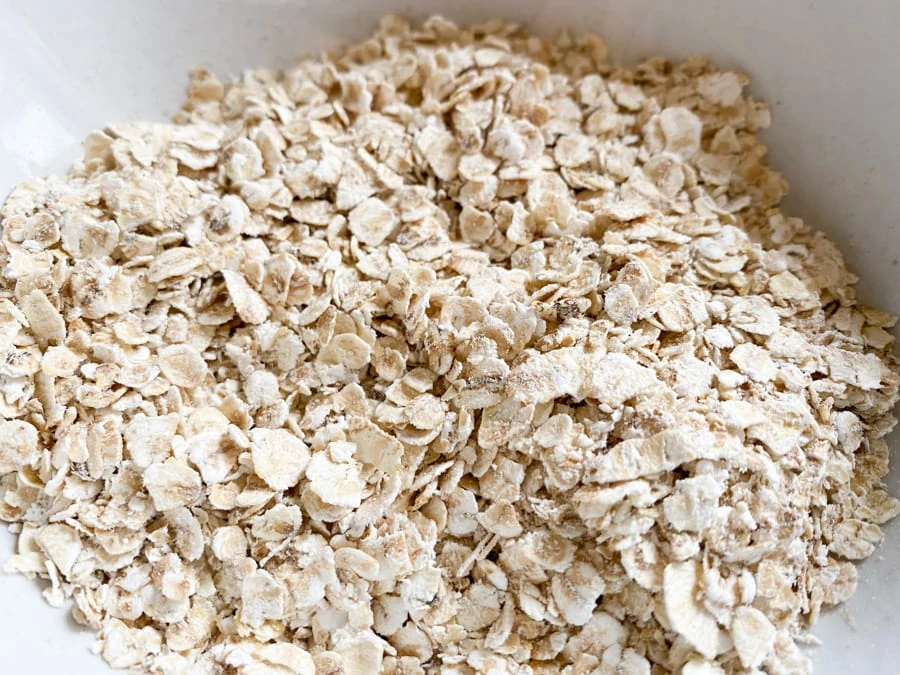
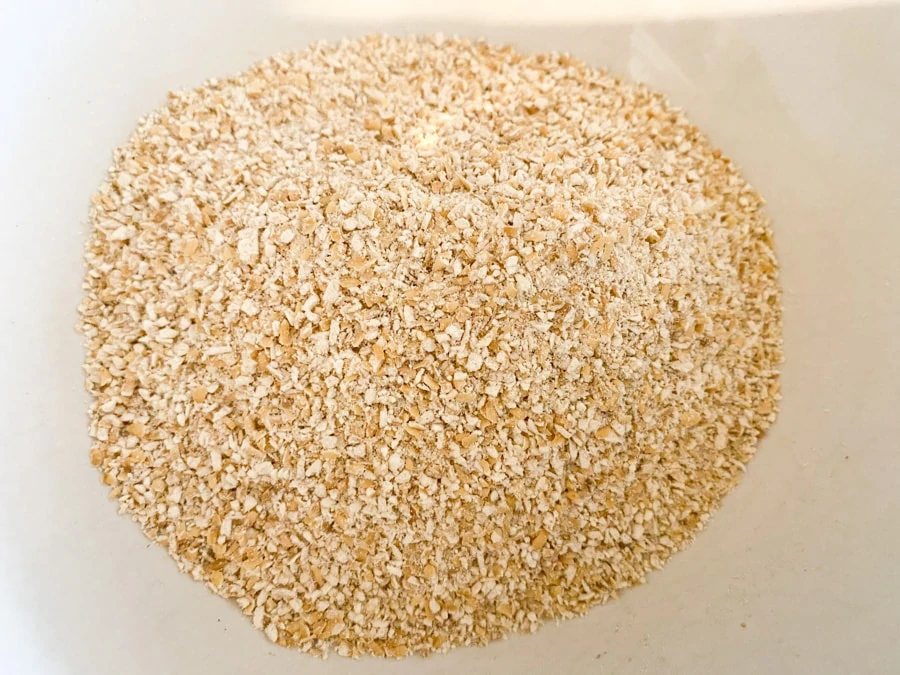
How to make Scottish Oatcakes – step by step method
Pre-heat the oven to 180C or 350F.
Take a large bowl and mix the two types of oats together.
Add the melted butter and mix to combine.
Now start to slowly add a little hot water until the oats and butter mixture comes together to form a pasty ball. You don’t want to add too much, so add 2-3 tablespoons and allow the oat mixture to absorb it. If you need to, add 1-2 more and then knead with your hands.
Form the mixture into a ball before transferring to a flat surface for rolling out. We like to use a non-stick rolling/pastry mat, but you can also sprinkle the surface with a little flour or oatmeal if you need to so they don’t stick.
Roll the mixture out to about 1/4 inch or 0.5cm thick. Use a cookie cutter, glass, or the round edge of a scone cutter to cut the dough into circles and then move them into your baking tray.
Bake in the oven for 25-30 minutes, turning once. Allow to cool and eat!


Oatcake variations
You’ll find plenty of varieties of oatcakes in the supermarket, but now you can make your own too!
We have made these traditional oatcakes with just oats, but you can add in a few other ingredients for flavour too.
Add in some grated cheese and black pepper or some sesame and poppy seeds. Try peri-peri and a hint of chilli for some spice or even herbs like rosemary.
What to serve Oatcakes with
As we said, oatcakes can be like the bread of Scotland. That means you’ll often see them served with soup, cheese, or with a variety of toppings.
They can really be served with anything you like! Pickle and cheese is one of our favourites, as is cream cheese and a bit of cold-smoked Scottish salmon.
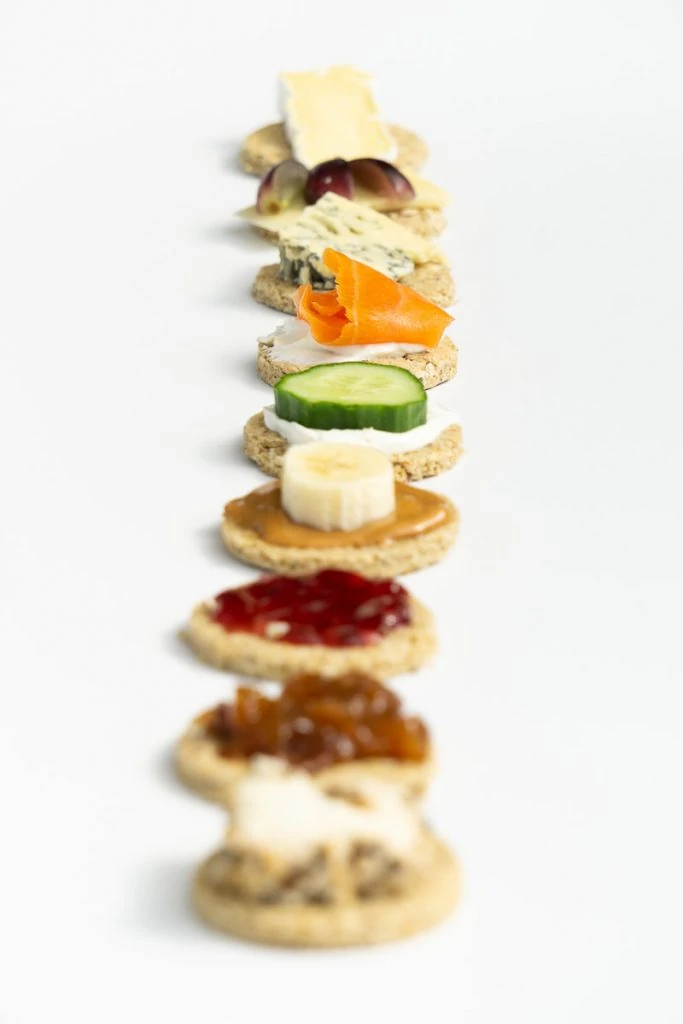
Scottish Oatcakes Recipe
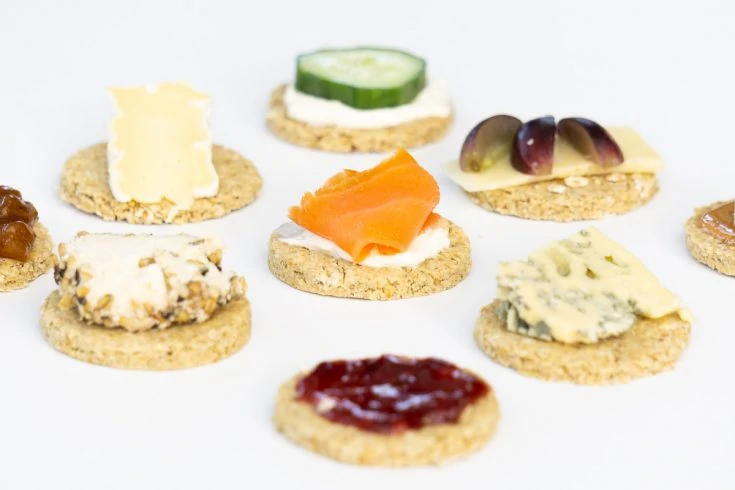
Oatcakes are a traditional cracker made out of oats that can be found all across Scotland.
Their versatility means you’re as likely to be served them with soup as cheese or pate when you’re eating out, and there is a multitude of different varieties across supermarket shelves.
Perfect as an addition to a meal or an in-between snack. They’re a bit like the bread of Scotland, and have been made here for hundreds of years!
Ingredients
- 100g porridge oats (or rolled oats - see notes)
- 100g oatmeal
- 25g butter
- 1tsp salt
- A few tablespoons of hot water
Instructions
How to make Oatcakes - step by step method
- Pre-heat the oven to 180C or 350F.
- Take a large bowl and mix the two types of oats together.
- Melt the butter then mix with the oats to combine.
- Slowly add a little hot water until the oats and butter mixture comes together to form a pasty ball. Don’t add too much too quickly, so add 2-3 tablespoons and allow the oat mixture to absorb it. If you need to, add 1-2 more and then knead with your hands.
- Form the mixture into a ball before transferring to a flat surface for rolling out. We like to use a non-stick rolling/pastry mat, but you can also sprinkle the surface with a little flour or oatmeal if you need to so the mix doesn't stick.
- Roll the mixture out to about 1/4 inch or 0.5cm thick.
- Use a cookie cutter, glass, or the round edge of a scone cutter to cut the dough into circles and then move them into your baking tray.
- Bake in the oven for 25-30 minutes, turning once. Allow to cool and eat!
Notes
Oatcakes are a delicious and easy snack! You can top them with chutney and cheese, jam, peanut butter, banana, whatever you want! They're also lovely with soup.
Different types of oats:
Rolled oats are usually the bigger, rounder variety that are flattened with a roller. Porridge oats are a little more broken down as they are crushed. Oatmeal is like a blended version that is smaller again.
For our recipe, we use a mixture of porridge oats and oatmeal. In this sense, the oatmeal is like ground-up porridge, as we often see oatmeal referring to cereal elsewhere!
If you only have access to rolled oats, then you can use these as they also break down well in water, or you can use a blender to make them slightly smaller. Not too much, or they'll be like oatmeal!
Nutrition Information:
Yield:
15Serving Size:
1Amount Per Serving: Calories: 31Total Fat: 2gSaturated Fat: 1gTrans Fat: 0gUnsaturated Fat: 1gCholesterol: 5mgSodium: 173mgCarbohydrates: 3gFiber: 0gSugar: 0gProtein: 1g
The nutritional data in this recipe is provided by a third party and these values are automatically calculated and offered for guidance only. Their accuracy is not guaranteed.
Other Scottish Savoury Baking Recipes to Try:
- Simple Scottish Bannocks Recipe
- Forfar Bridie Recipe – Scottish Handheld Meat Pies
- The Perfect Scottish Morning Rolls Recipe
- Easy & Authentic Scotch Pie Recipe
- Butteries Recipe (Also Known As Rowies and Aberdeen Rolls!)
- Easy Haggis Sausage Rolls Recipe
Sonja and Phil x
Pin for later!
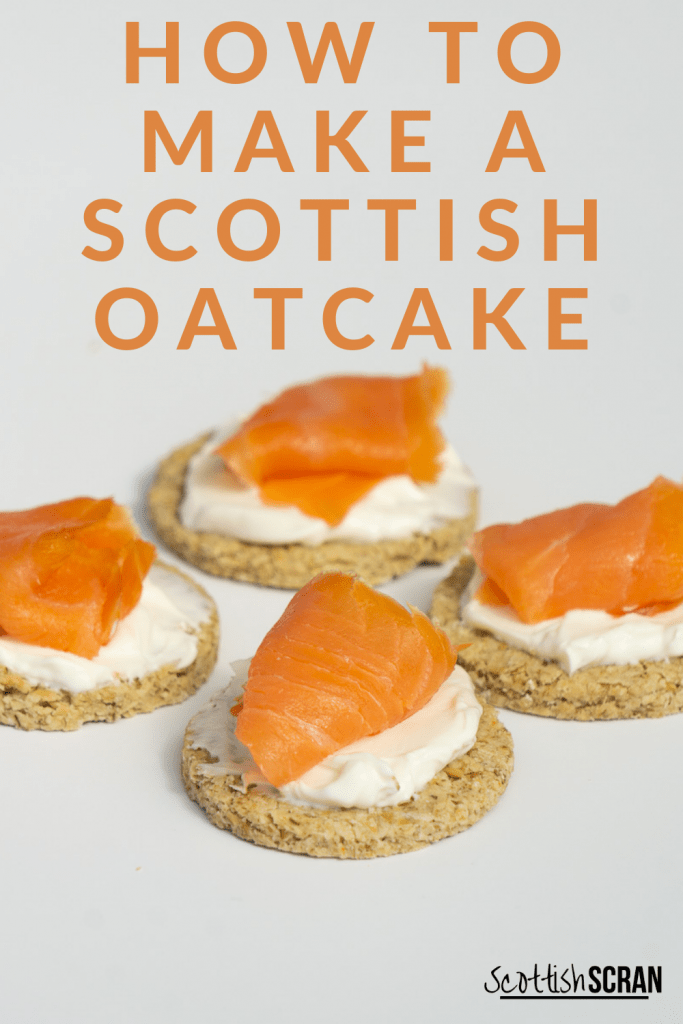

I am very confused with your recipe’s ingredients for Scottish Oatcakes Recipe. What is the diference between rolled oats/porridge and oatmeal? To me, they are the same thing! Please explain what the difference between the two ingredients! Thank you very much!!
Hello, this can cause some confusion so we try to clear it up in the post – “Rolled oats are usually the bigger variety, with porridge oats being a little more broken down.
For our recipe, we use a mixture of rolled/porridge oats and oatmeal. In this sense, oatmeal is ground up porridge/rolled oats.”
There’s also a picture of each type with a caption to explain which one is which to try and help as we understand that in different countries different oats are called different things. Who would have thought the simple oat could cause so much confusion! Hope this helps.
Many in the USA will only know of “rolled” oats (calling it “oatmeal”) and probably have never heard of the “porridge” version of oats before. The exception would be places with Scots/Irish cultural pockets and there the porridge oats would be called “Irish” oats in stores. As a child I mistakenly thought stone ground or steel cut oats were only from Ireland.
I mixed up “porridge” and “oatmeal” LOL
Haha yes it’s a bit confusing and also because they’re called different things in different countries!
So many variations!
I’m even more confused now! You say porridge oats are more broken down then rolled oats but in a few other posts it says porridge oats or steel cut oats which are very hard and take longer to cook.
So I don’t know what to use really here in the states.
Maybe after the real recipe you could put a little ingredients list for other countries.
Hi Christine,
We’re really sorry for the confusion! This is one of our original recipes that we made back when we started sharing them, so it definitely needs some more information added, as you say. We’ll do so soon! In the meantime, we’ve slightly changed it to make the difference between porridge and rolled oats clear. Both generally break down well so are good to use, although porridge oats are best. Steel cut oats are definitely chewier and have a firmer texture so probably wouldn’t hold together so well for oatcakes. We call these “pinhead oats” as they’re like little hard balls and take a lot more cooking. We wouldn’t recommend using these for oatcakes.
Porridge oats seem to be called “oatmeal” in the US, but to us, oatmeal is even more ground down than porridge oats, which are flakier. You can see the difference in the images between what we would call porridge oats and oatmeal. If you find US “oatmeal” that looks like the porridge oats we have, then use that, and blend some down more for the UK oatmeal side of the recipe. If you can’t find that, then look for rolled oats, and give them a couple of whizzes in a blender to break them down slightly more (not too much!) to be closer to porridge oats, and then break them down even more for the “UK oatmeal” part of the recipe. We really hope that helps!!
I use a coffee grinder to reduce oats to a texture that I want. A few seconds gets shop packet oats to a finer meal texture which helps to hold it all together. You can do longer to get a flour, or you can grind half of your oats (say) and half not ground to vary the texture. Or just grind the whole lot to a finer texture if that’s what you like.
Loving the idea of minimal salt, a spoonful on the side while you make the oatcakes
A bit like the best gin Martini only needs a bottle of vermouth to be in the building
This actually made us LOL, thanks James!
Oat meal nomenclature:
Rolled Oats = same thing across the pond.
“Porridge” Oats (Scotland) = “Steel Cut” Oats (USA)
In Scotland the oat groats are traditionally stone ground for creamier “porridge” or “oatmeal” as we call it in America. Great site to check out the variations: https://wholegrainscouncil.org/
Thank you so much for this recipe!
My oatcakes come out crumbly without any snap. Like eating sawdust. What am I doing wrong??p
It may be down to the oats you’re using! You might need to try adjusting the ratio of oatmeal to oats as it could be that the oats are too big. Adding a little more butter may also work.
I found that I needed quite a lot more water than the recipe states.
It can depend on the oats used for sure!
Okay. I need to clear up something. Porridge oats for us in the good old USA, are instant oats.
Rolled oats are the same.
Oatmeal isn’t confusing at all if you compare it to other meals. Cornmeal for instance comes in fine, or coarse grain varieties. It essentially is the steel cut that is sold here.
This recipe calls for instant oats, and rolled oats. More rolled than instant will create a more hearty cake, but they might crumble more than you’d like. If you want them to be really snappy, double, or even triple bake them. The moisture is what keeps them chewy.
I wasn’t sure what to do with the salt . . . so I threw it over my shoulder . . .
It can never hurt, unless you’re stood behind the chef
Hello
Can these be done in the air fryer at all please?
Thanks
Sorry Tracey, we don’t think so using this recipe
Wow am I confused! Oatcakes of any description are virtually unknown (or at least unobtainable) in SW France, so thought I’d make my own. I have a bag of Irish (sorry!) pinhead oatmeal and a box of Flocons d’Avoine (i.e. oatflakes). Do any of these correspond to your recipe for oatmeal and rolled oats. I’m confused by the fact that you state that pinhead oats are not suitable for oatcakes. Help!
It would seem that Flocons d’Avoine are the French Equivalent to UK Oatmeal, so these should be fine
How long do they keep? 🙂 Days? Weeks? Months? Years? Thanks 🙏 Ingrid
Not long in our house! We would suggest in a sealed tin 2-3 days
Lovely recipe worked well for me! I’m fed up with only being able to find oatcakes made with palm oil in the supermarkets. I used lard instead of butter as it is high in mono-unsaturates. I took UK porridge oats and ground then up a bit in my blender to give a kind of 50/50 ratio of fine oatmeal to smallish flakes. This is what I also do when making flapjacks so I’m used to it. I also added a couple of tablespoons of chia seeds.
I didn’t measure the water but just added it bit by bit until the dough came together and was kneadable.
Much more delicious than shop bought.
I am a bit confused by your description of different oats. I know what you mean by rolled oats, but I usually use stoneground oats to make porridge. Is that what you mean by ‘porridge oats’? Or are you talking about steel-cut oats? Would it be possible to make oatcakes using only stoneground oats and no rolled oats? Thanks.
Hi there, we have a good explanation of this in our Porridge post – https://scottishscran.com/how-to-make-porridge/
Being in the US I had the oatmeal question solved by buying Bob’s Red Mill Scottish oatmeal. I can buy it on amazon or Ocean State Job Lot.
I am looking forward to making my own, Thank you for the recipe